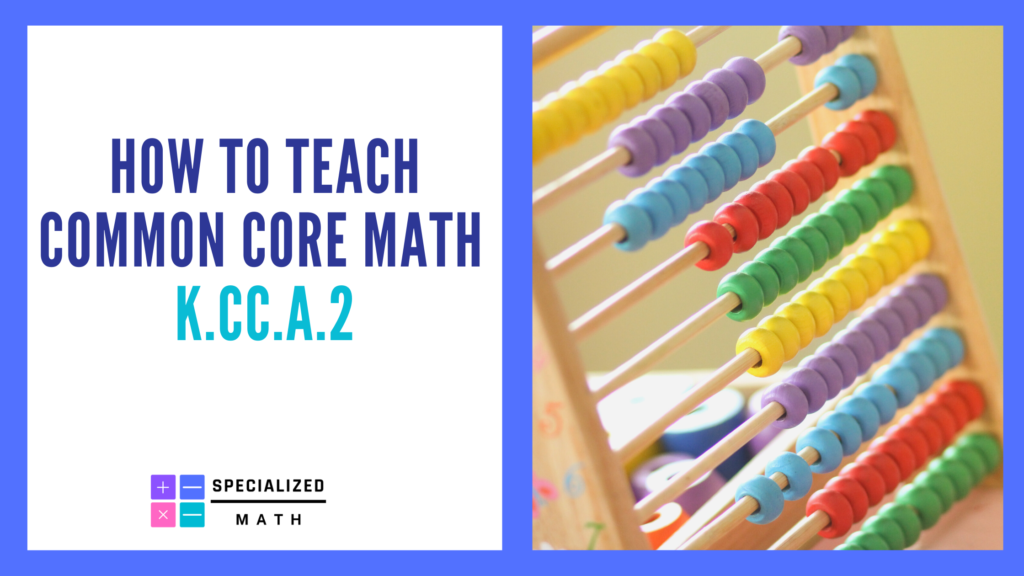K.CC.A.2 is a part of the major cluster Know Number Names and the Count Sequence (K.CC.A). K.CC.A is a major cluster, which means that it is important to focus attention here as major work represents 65 to 80 percent of the grade level content. Below I will break down the focus of K.CC.A.2 as well as the common misconceptions, prerequisite knowledge, vocabulary, and strategies to support students with disabilities.
What does the standard say?
K.CC.A.2 states that students should Count forward beginning from a given number within the known sequence (instead of having to begin at 1).
About K.CC.A.2
Counting on or from a specific number can be confusing for students who have previously learned to start counting from the beginning. Students must understand cardinality to be effective in counting on. Students frequently combine or split two groups of objects before counting again from the beginning to determine the total number of objects. Counting is still a rote skill for these students, or the benefits of counting have not yet been recognized. Students can practice this concept by playing games that require them to add to a previous count.
Common Misconceptions
Students may believe that the count word chosen to tag an item is forever linked to it. As a result, students may use the the original count word when the item is used for counting again and should be marked with a separate count word. For example, a students use the count words one, two, three, and four to count a red, blue, green, and yellow counter. If these elements items are rearranged as yellow, blue, green, and red then students may assign the original count word to each item. For example red would still be one, even though it is now the fourth item counted.
Prerequisite Skills
● Say counting numbers in the correct sequence from 1 to 20 attending to how teen numbers are worded (see teacher notes on K.CC.A.1)
● Say counting numbers in the correct sequence from 1 to 100 attending to the patterns of increasing by ones and tens (K.CC.A.1)
Vocabulary
count, after, next, ones, counting on, number names from 1 to 100
Strategies to Support Students with Disabilities
● Use kinesthetic and/or auditory cues while counting (clapping, jumping, whistles, etc. For example: Students start counting from three and clap on the decade numbers)
● Teacher supports counting by beginning the sequence for the students to provide the first few numbers (For example, if a child does not know what comes after “thirteen,” the teacher prompts, “ten, eleven, twelve, thirteen”)
● Extend understanding by orally counting on from a given number to a target number
● Count along a number line
● Count along with a hundreds chart
● Integrate counting with calendar routines
Sources:
https://hcpss.instructure.com/courses/124
https://www.uen.org/core/math/elemcoreguides.shtml

